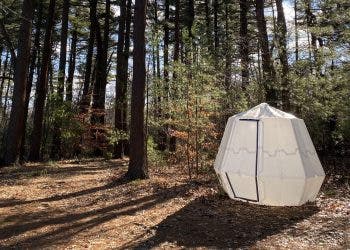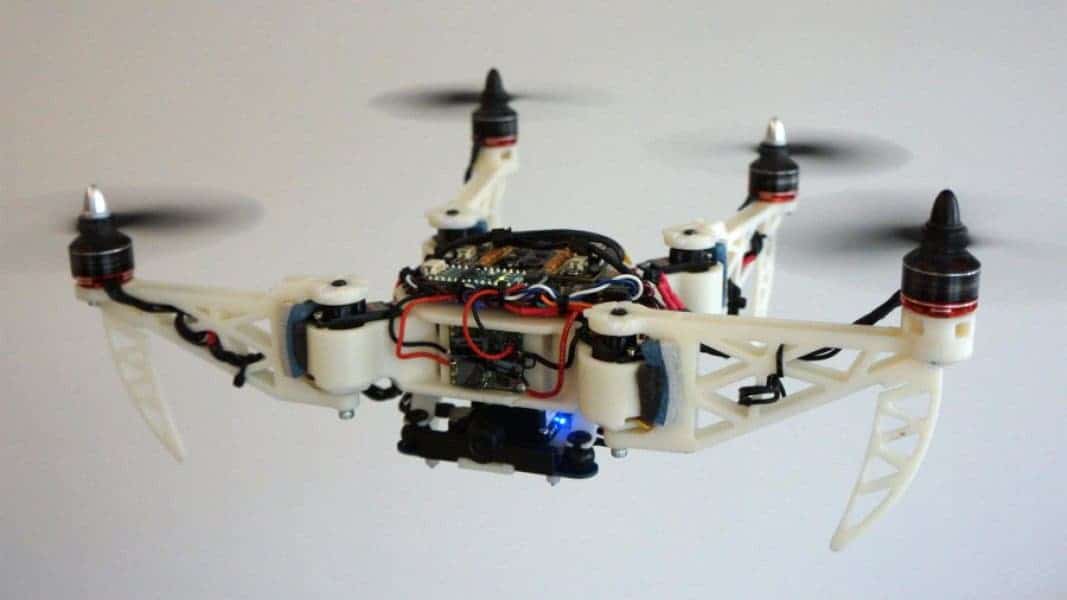
Walls are necessary but lifeless elements of buildings. They give structure and protection but don’t really do much else. A group of researchers wants to change that.
They want to “tattoo” walls with microbial life. These would signal when the structure is under stress or even capture CO2 or pollutants. The idea is to use inkjet printing technology to apply living microorganisms onto walls in intricate, tattoo-like patterns. These “living tattoos” would turn passive concrete, wood, or metal surfaces into active bio-interfaces — what scientists call “engineered living materials.”
From walls to ecosystems
Buildings today are mostly lifeless. They heat up under the sun, accumulate grime, and wear down with time. But REMEDY sees enormous, untapped potential in their surface area. Over the next 25 years, more than 9.4 billion square meters of façades and rooftops will be renovated or built across the European Union alone. That’s an area nearly the entire area of the United States, and it’s just in Europe. Other regions are building even more.
Professor Tom Ellis from Imperial College London says doing things like we’ve done until now is a missed opportunity.
“The built environment is always increasing in its surface area, and there’s a lot of opportunities there,” he told Professional Engineering. “We can already see that the roofs of buildings, particularly public buildings, can be a source for energy generation, so you start thinking about the outside walls and internal walls as well… there’s a really good space to have living aspects of those, for all sorts of different applications.”
Of course, you can’t just take any microbes and put them on a building. Scientists at the University of Ljubljana, led by microbiologist Nina Gunde-Cimerman, are selecting specific microbial groups, mixing bacteria, fungi, and possibly algae that can coexist, endure the outdoors, and serve specific purposes.
The first such purpose is sensing.
If Walls Could Sense
“Biology is very good at sensing the environment, and recording and making use of that information. So, you can imagine scenarios where a living wall could be able to respond to, for example, gas or pollutant levels in the environment, and then record that information,” Ellis says.
For this purpose, researchers are particularly looking at lichens, which can grow on almost any surface for long periods of time.
“You can imagine a scenario where you have lichens that have been chosen that specifically change color and respond to things like heat stress, and then you can use them to understand when buildings are undergoing heat stress… you can also imagine a more futuristic version where, in response to that heat stress, it changes color in a way that reduces the heat stress.”
In time, you could even create patches that repair and maintain buildings on their own.
“The aim is to create a beneficial microbiome for buildings that is resistant to pathogenic microbes and repairs superficial cracks on its own,” said Carole Planchette, from the Graz University of Technology. “Additional benefits will range from carbon sequestration and oxygen production to bioremediation, among others.” Planchette also told us that the living inks to be used could be tuned to lend their bioluminescent ability to the project, making some buildings glow.
Functional Aesthetics

The method of application is just as challenging. REMEDY researchers opted for inkjet printing. In principle, it’s the same technology printers have used for years, but for buildings, you need a different type of inkjet printing. Print particles are small, on the nanoscale. Living microorganisms are much larger, often forming clusters that are several millimeters across.
That’s where the challenge comes in.
“We opted for inkjet printing because it allows us to apply the living ink very precisely, in a controlled manner and quickly at the same time,” said Planchette. “But we are entering uncharted territory.”
To make this vision possible, the team is working with several companies to modify printers that can handle biologically active, micrometre-scale ink. Getting the microbes to survive the printing process, adhere to various surfaces, and remain active over time will require extensive trial and error.
The results could be transformative. “Living tattoos” could initially be printed onto smaller panels, like roof tiles or cladding, allowing for real-world tests in diverse climates and conditions. Over time, entire building surfaces could be printed with living patterns that adapt to their environment.
At first, these tattoos would be quite small. “You wouldn’t necessarily think of ink-jet printing on the side of a skyscraper, but maybe when you produce tiles, those could be inkjet-printed,” Ellis said. But unlike solar panels or HVAC systems, these biological systems grow. They’re adaptable, self-repairing, and don’t need new land. They use what’s already built.
Building for the Future
This isn’t the first time researchers have looked to biology for inspiration. In recent years, scientists have created fungus-based bricks, self-healing concrete, and synthetic lichens. But REMEDY goes a step further by embedding biology into architectural surfaces themselves. Essentially, they’re blurring the line between built environment and living organisms.
With urban areas responsible for over 70% of global CO₂ emissions, and the building sector one of the biggest contributors, cities must evolve. From green roofs to vertical gardens, nature-based solutions are increasingly common. It will take a while before building tattoos become widespread, but researchers expect them to ultimately become commonplace.
“Along with all of these other things — like solar panels and better use of sustainable materials — in 50 years from now, I expect this to be a key part of any new building going up,” Ellis said. “I think all new buildings going up 50 years from now will be expected to have a positive footprint on the environment, compared with what they’re replacing.”






